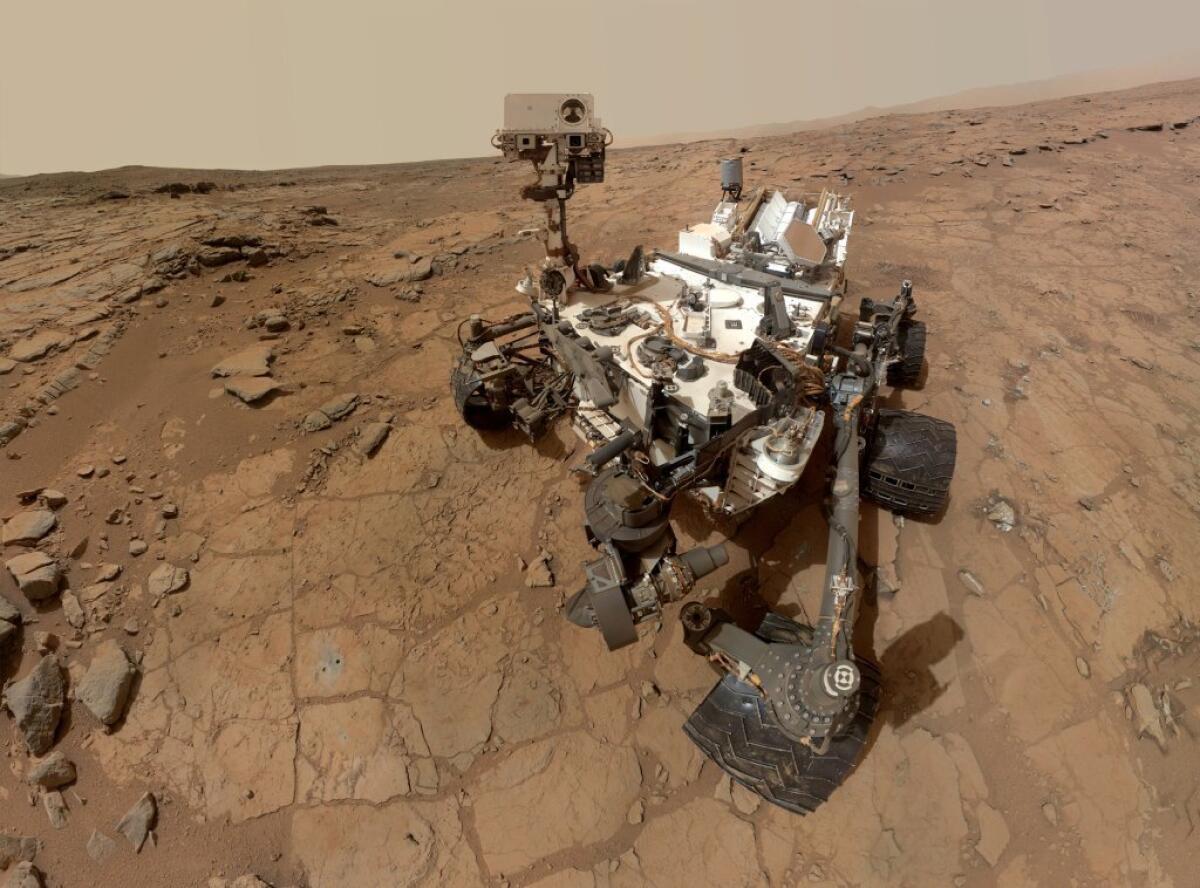Marsâ once-thick atmosphere now stripped; bad news for life?

NASAâs Curiosity rover has breathed in Martian air and sniffed out good news and bad news for alien life: The Red Planetâs atmosphere was likely several times thicker early in its history â but itâs probably been thin for billions of years, according to scientists on the Mars Science Laboratory mission.
Given Marsâ current lack of hospitality, two papers published in the journal Science hint that the hunt for critters on Mars would have a better chance by looking for truly ancient signs of life rather than trying to find current â or even recent â biological activity.
âIn current Mars, life has a lot to worry about,â said Paul Mahaffy, lead scientist for the Sample Analysis at Mars suite that did the scientific heavy lifting for this work. âNot only is there a lot of ultraviolet radiation hitting the surface, there are these big thermal gradients between day and night [and] thereâs very little water.â
The measurements, taken over more than three months, represent the first in-depth analysis of the planetâs atmosphere, Mahaffy said.
Using the lab tools that Curiosity carries around in its belly, the rover tasted elements including hydrogen, carbon and argon, as well as their heavier isotopes. When air escapes into space, the lighter versions of each element tend to take off first, with the heavier isotopes staying behind longer. Measuring the ratio of heavy to light isotopes tells scientists how much of the lighter version has gone missing â and thus, how much of the original atmosphere must have disappeared.
Today, Marsâ atmosphere is roughly 1% that of Earthâs. Four billion years ago, the atmosphere may have been many times thicker than it is today, Mahaffy said. Though itâs unclear exactly how much was lost and why, a number of factors come into play.
Mars had a magnetic field that would have shielded against charged particles from the sun, Mahaffy said â but after the planetâs iron core cooled down, the magnetic field faded, leaving its atmosphere vulnerable to the onslaught.
âOn Mars they just go slam-ding into the atmosphere and can strip it away,â Mahaffy said. Today, he added, âthatâs probably one of the significant mechanisms for current atmospheric loss.â
On top of that, the late heavy bombardment â a period 4.1 billion to 3.8 billion years ago, when rocky detritus in the solar system hammered the inner planets â could have stripped out a significant amount of atmosphere too.
âSo you have the combined whammo of impacts,â Mahaffy concluded.
Still, even with that apparently major loss of atmosphere, water still flowed on the surface of Mars around 3.5 billion years ago, a finding supported by Curiosity, he added. Even in a potentially very harsh environment, Mahaffy said it was still possible that life had developed even in unforgiving conditions.
âWho knows how easily life develops, even in very favorable, kind of benign conditions?â Mahaffy said. âHow much do we really know about how â as those conditions changed, as Mars got colder and as the atmosphere got thinner â how life might have adapted?â
Perhaps it went underground, Mahaffy said. In any case, he added, âI think the juryâs still out.â
The rover also didnât find much methane in its readings â a molecule linked to living things and a biological âsmoking gunâ of sorts. But the scientists will continue to search for signs of the elusive molecule, Mahaffy said, and await atmospheric data from NASAâs MAVEN satellite, planned for launch later this year. A planned 2020 rover would look for signs of past life, NASA officials said earlier this month.







